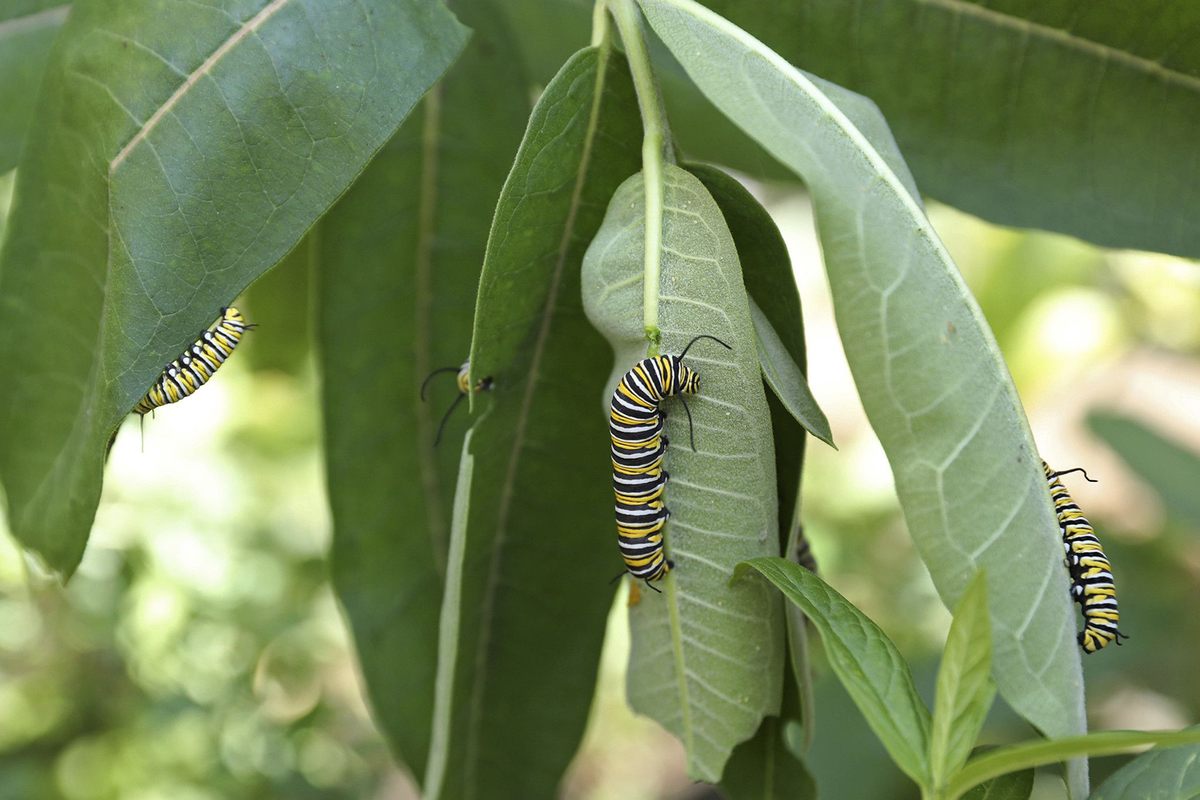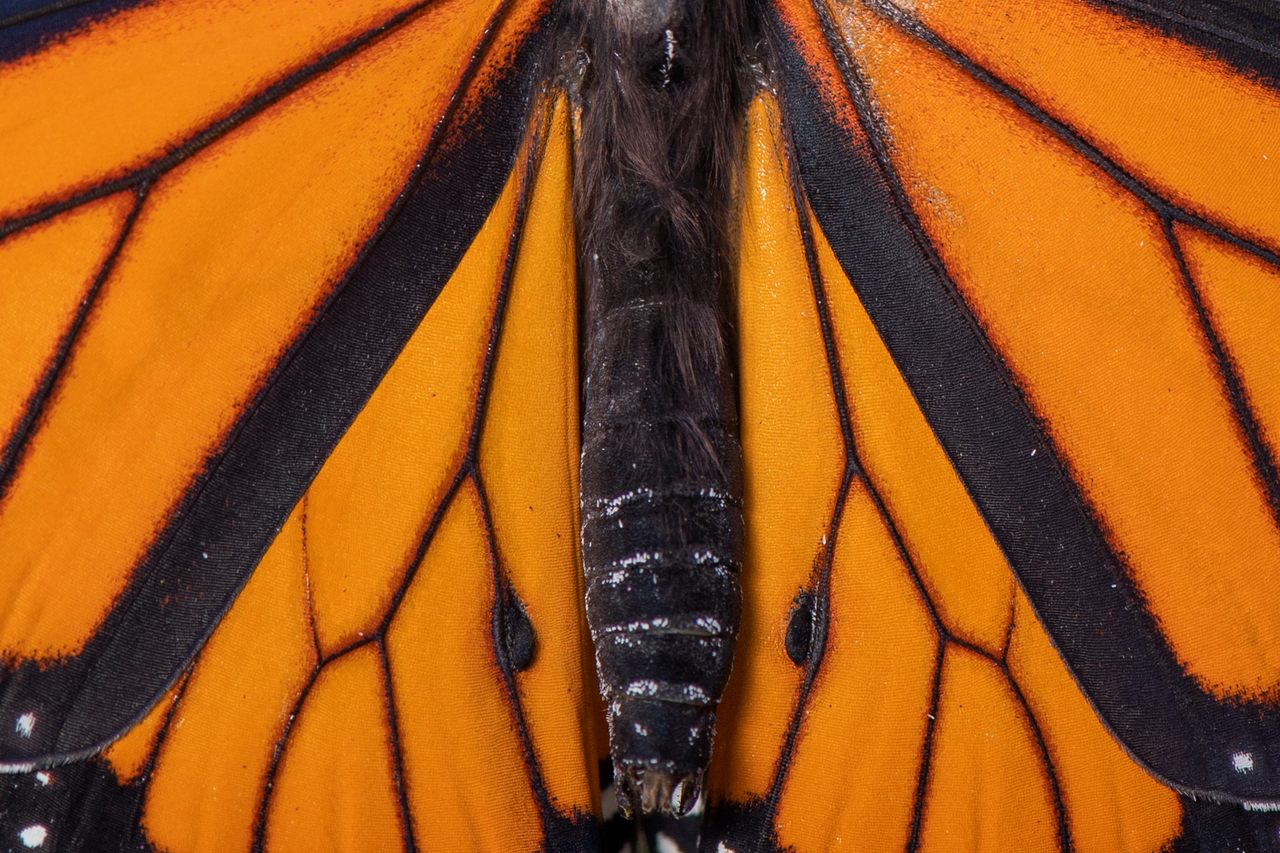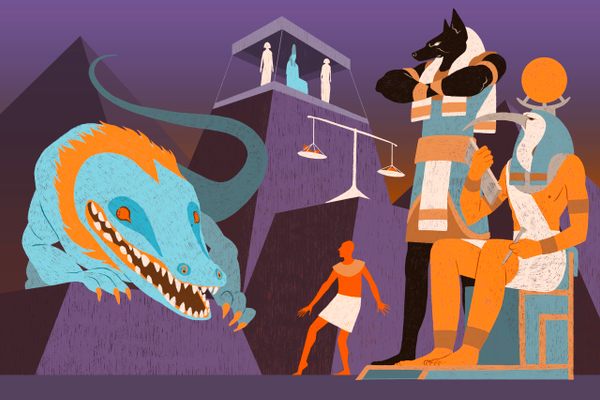The Monarch Butterfly Steals From Poisonous Plants to Survive
The butterfly defends itself using milkweed, just one of several plants packed with heart-stopping toxins that may also be in your medicine cabinet.
Excerpted and adapted with permission from Most Delicious Poison: The Story of Nature’s Toxins—From Spices to Vices, by Noah Whiteman, published by Little, Brown Spark. Copyright © 2023 by Noah Whiteman. All rights reserved.
My family moved to the rural township of Toivola, near the hamlet of Meadowlands, Minnesota, the summer before I entered sixth grade. The timing permitted a few months of unfettered exploration before school started.
Conveniently, a 39‑mile abandoned railroad grade ran right in front of our house. I used it to enter the Sax‑Zim Bog.
Studded with stunted black spruces, tamaracks, and legions of northern pitcher plants, the taiga‑like landscape might as well have been Alaska. The plants weren’t alone in this boreal visage. Although secretive, snowshoe hares and timber wolves betrayed themselves in the winter as they laid tracks in the freshly fallen snow.
To walk along the trail is to be transported back in time. When the Laurentide Ice Sheet retreated 11,000 years ago, it left a depression that formed a meltwater lake called Glacial Lake Upham. The poorly drained lowlands that include the bog are its remnants. Many layers of peat, piled up over thousands of years, hold some of its frigid meltwater to this day. Notoriously cold in the winter, this relic of the Wisconsin Ice Age was a natural refrigerator during the hot, humid summers.
Shortly after we moved, my dad and I traversed the ditch that ran along the road parallel to the trail. As we climbed up the flank of the old railroad grade, both of us noticed a large patch of common milkweeds, plants in the dogbane or Apocynaceae family. Monarch butterflies flitted about the orbs of purple flowers bobbing in the summer wind.

From a distance, we spent a minute or so taking in this perfect portrait of nature. I had a flashback to kindergarten, when our teacher sat at her kidney‑shaped table and led a reading circle devoted to the “barfing blue jay” photo series by monarch butterfly biologist Lincoln Brower in Scientific American. My classmates shrieked in disapproval as she revealed the last photo, capturing the moment the blue jay vomited just after it had gobbled up the monarch. When the class quieted down, Mrs. Bennett explained that the butterflies contained poisons that caused the bird to vomit.
On hearing this, I had immediately conjured up an image of the ipecac syrup bottle my parents kept in our bathroom at home. They had instructed us to take one half-teaspoon of the stuff if my brother or I had ever eaten or drunk anything poisonous. Its use as an emetic was widespread: In 1984 alone, 68,000 American preschool children were given ipecac after ingesting something toxic.
It turns out that ipecac is also toxic, because the active ingredient is the aptly named alkaloid emetine. Emesis means “the act of vomiting.” Ironically, although ipecac syrup was used to prevent poisoning after consumption of a toxic chemical, the emetine in ipecac syrup, like the cardiac glycosides in the milkweed sap, are heart poisons themselves—another example of how natural toxins can be double‑edged swords.
The tragic death of singer Karen Carpenter in 1983 was caused by “emetine cardiotoxicity due to or as a consequence of anorexia nervosa,” according to the autopsy report. Unfortunately, the use of ipecac among people with eating disorders was not uncommon.
Ipecac syrup is derived from the roots of a plant in the coffee family native to Brazil. The plant is called ipega’kwãi by the Tupi people of the Atlantic coast. By the mid‑17th century, it made its way to Europe. There it was used as an emetic and a treatment for dysentery well into the 20th century. Nowadays, however, it is a dysentery treatment of last resort, owing to heart toxicity, just as the cardiac glycosides found in milkweeds and foxglove plants are now disfavored as medicines. Of course, these complications hadn’t entered my five-year-old mind, and I was mesmerized by the beauty and danger that were rolled into one through the monarch.
The monarch’s cinnamon‑orange and black‑and‑white polka‑dot wings did not evolve for us to admire; monarchs look the way they do because they are poisonous. And their appearance, like a stop sign, sends a strong warning to predators to think twice before attacking. But the monarchs don’t make their poisons themselves—they steal them from plants.

After my father and I walked over to the patch of milkweeds, he tore one of the leaves in half. White latex dripped from the leaf. “That’s why they call it milkweed,” he said. “Don’t ever eat it. Heart poisons are in that sap.”
As we continued to watch the milkweeds and monarchs over the next month, it was easy to spot the yellow, black, and white-striped caterpillars as they hatched from the eggs the butterflies had laid on the leaves, and munched away, oblivious to us, while we inhaled the fragrant perfume wafting from the milkweed blossoms. This tropical scene was out of place in a boreal bog, an Henri Rousseau chef d’œuvre come to life.
The caterpillars of other butterflies and moths that we saw were mostly green, blending in with the vegetation. Some, like the maple leaf‑cutter caterpillars that ravaged the trees around our house, even made tiny shelters out of leaves. The monarch caterpillars instead flaunted their gaudy colors in broad daylight.
I knew that birds would vomit if they had eaten a monarch, but I didn’t understand why. The butterflies were poisonous, my dad explained, because as caterpillars, they had eaten toxins from the milkweed leaves. The insects then stored the toxins in their bodies all the way through metamorphosis, from a zebra‑striped caterpillar to a chrysalis encircled at the top by a golden diadem, to the familiar brightly colored butterfly.
In entomologist Jim Poff’s insect biology course at Saint John’s University, I learned about a series of papers published between 1965 and 1968. The articles revealed that the toxins in the monarch were terpenoids called cardiac glycosides. One of the principal toxins in the common milkweeds that my dad and I encountered is aspecioside. The monarchs obtained these heart poisons during their caterpillar stage. But the caterpillars did something even more extraordinary—they concentrated the toxin to levels even higher than those found in the milkweed itself.

In at least 14 instances, including examples in herbaceous weeds, tropical trees, fireflies, and toads, plants and animals have independently evolved to synthesize cardiac glycosides as a defense mechanism. Plant species containing these heart poisons include crown vetch, foxglove, hellebore, jute mallow, lily of the valley, oleander, pussy ears (Kalanchoe spp.), sea squill, wallflower, and the related suicide tree and tangena tree in the genus Cerbera. In Madagascar, the tangena was used in trials of ordeal, wherein the guilt or innocence of the accused was determined when they were forced to consume the tangena nut, which is naturally filled with cardiac glycosides. Upward of 250,000 people, most of whom were enslaved, died from this practice between 1790 and 1863.
Monarch butterflies evolved to become brightly colored to warn birds and other predators of the bitter and emetic cardiac glycosides within. Birds that attempt to eat an unpalatable butterfly can then learn to associate the bright colors with the bitter taste of that first bite. Or if the bird goes beyond tasting, eats the insect, and winds up vomiting, it associates the butterfly with danger, just as Pavlov’s dogs learned to associate the ring of a bell with food. The multilayered signals that tap into both the innate and the learned responses of predators can be found in the most unlikely places.
The toxic channel of communication that flows between signaler (monarchs) and receiver (birds) therefore enables an extraordinary migration event. Each fall, millions of monarchs migrate up to 3,000 miles from their natal habitats in eastern North America, like the Sax‑Zim Bog of Minnesota, to the oyamel fir forests of Michoacán, Mexico. It is the same place visited by their great‑grandparents or even great‑great‑grandparents the year before.
The air temperature of these subtropical mountains is just right—usually warm enough that the butterflies won’t be killed by frost and cool enough to slow their metabolism so they can make it through the lean months. Like the butterflies, their milkweed host plants were tropical invaders, too, having moved into the northern prairies sometime after the retreat of the Laurentide Ice Sheet. Without the milkweeds, the monarchs cannot breed in the bog; nor would their intergenerational migration take place. But the milkweeds can’t uproot themselves and walk to Mexico to escape winter. Instead, they retreat underground, where their toxic, subterranean stems rest for the winter and resprout in the spring.
The cardiac glycosides that protect milkweeds from most enemies are so named because they affect the functioning of the heart. In 1953, physiologist Hans Jürg Schatzmann discovered that these toxins inhibited the movement of sodium and potassium across the membranes of human cells. Nearly 40 years later, in 1997, biochemist Jens Skou won the Nobel Prize in Chemistry for discovering the sodium potassium pump, which the cardiac glycosides bind to in these cells.
Skou found that cardiac glycosides inhibit the pump’s ability to move sodium out of cells and potassium into cells, a process that is critical for allowing nerves to fire and heart cells to contract. The heart is where cardiac glycosides convey both their life‑extending and life‑ending effects.
The bulb of the sea squill, which produces a beautiful flower and is a relative of hyacinths, also produces cardiac glycosides. It is first mentioned in the Papyrus Ebers from around 1550 BC. The plant has been used medicinally for thousands of years, but its use for treating heart ailments began to come into focus by the first century, a fact we’ve learned from Aulus Cornelius Celsus’s De Medicina. Celsus ingloriously but accurately recommended it for treating “dropsy,” or edema (fluid buildup) in the lungs, which can occur after heart failure: “It is also useful to suck on a boiled squill.”
Along these same lines, physician William Withering published a study in 1785 on another plant that produced cardiac glycosides. His research foreshadowed the clinical trial as we know it. He successfully treated 164 patients who had edema with extracts from the leaves of the purple foxglove Digitalis purpurea. The report, titled “An Account of the Foxglove and some of Its Medical Uses,” led to the widespread use of cardiac glycosides to treat heart ailments.

In his report, Withering recounted how the foxglove was in fact first used as a local folk remedy. The following quote from the report suggests how the seed might have been planted by “an old woman from Shropshire”:
In the year 1775 my opinion was asked concerning a family receipt for the cure of the dropsy. I was told that it had long been kept secret by an old woman in Shropshire, who had sometimes made cures after the more regular practitioners had failed.
How exactly do cardiac glycosides work to treat edema? A carefully metered dose inhibits the sodium‑potassium pump (sodium pump hereafter) in the heart, as Skou discovered. This inhibition of the sodium pump causes a buildup of sodium in the cells of the heart and in turn drives up calcium levels. High calcium levels strengthen the contractions of the cells; the stronger contractions increase the blood pressure and reduce the heart’s rate of contraction. Digitoxin in the purple foxglove and digoxin in the white foxglove were the principal cardiac glycosides used until the mid‑20th century. There are chemical differences between these two drugs, but their pharmaceutical action is similar.
As digoxin became the drug of choice for many heart ailments, the apocryphal herbalist “Mother Hutton” was invented by the US pharmaceutical firm Parke‑Davis (now part of Pfizer) in the late 1920s as the embodiment of the “old woman in Shropshire” mentioned by Withering. Although there is no evidence that Mother Hutton represents an actual person, Withering’s account is an example of how traditional knowledge forms the basis for most of modern medicines derived from nature.
Digoxin is still used to modulate blood pressure and to treat heart conditions. In the United States alone, more than 2.6 million prescriptions were written for digoxin in 2019. It remains one of the World Health Organization’s essential medicines.

Another important cardiac glycoside like digoxin is ouabain, or g‑strophanthin. Ouabain is made by the so‑called poison arrow trees (Acokanthera and Strophanthus) native to East Africa, which, like milkweeds, belong to the dogbane family. The sap from poison arrow trees is used as both an arrow poison and medicine in diverse Indigenous cultures throughout sub‑Saharan Africa. The Wilé people of Burkina Faso are said to consider ouabain a gift from paradise to be used as either a poison or a cure, depending on the situation. After people learned of its powers, ouabain became a popular 20th‑century treatment for heart ailments in Europe.
Europeans actually first directly encountered ouabain in 1505, when the Portuguese sacked Mombasa, in what is now Kenya. The Europeans and their ships were met with a flurry of arrows tipped with ouabain. Similarly, Indigenous peoples in Amazonia, the Malay Peninsula, the Indonesian islands, Southwest China, and the Philippines all harvest the cardiac‑glycoside‑laden latex of several different tropical fig trees to prepare arrow and dart poisons. Evolution repeats itself and diverse species re‑evolve the same poison, and humans tap into these poisons independently over and over.
In the same vein, other animals besides the monarch and humans have also evolved the ability to use ouabain as a defensive weapon. The maned or crested rat of Africa makes its own ouabain poison from A. schimperi. Striped black and white like the cartoon skunk Pepé Le Pew, the rat first chews the bark of this poison arrow tree and then smears the masticate on a special row of spongy hairs that run along the side of its body. The hairs act like wicks to hold the ouabain, an effective chemical shield against dog attacks. The black and white stripes serve as a warning to enemies, just like the monarch’s—beware of the striking colors.





































Follow us on Twitter to get the latest on the world's hidden wonders.
Like us on Facebook to get the latest on the world's hidden wonders.
Follow us on Twitter Like us on Facebook